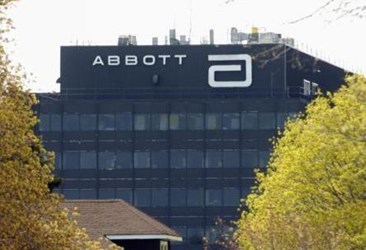Abbott CEO: 2017 Focus Is On Integrating St. Jude, Less M&A
By Jof Enriquez,
Follow me on Twitter @jofenriq

Abbott this year will concentrate on integrating St. Jude Medical and reducing debt, and will not be as active on the M&A front, according to the company's chief executive.
The $25 billion acquisition of St. Jude Medical announced in April 2016 was completed early this month. European and U.S. regulators late last year approved the transaction after Abbott and St. Jude agreed to divest their vascular closure and electrophysiology businesses to Terumo. Abbott anticipates annual pre-tax synergies of $500 million by 2020 resulting from St. Jude's integration, which makes Abbott a major player in the competitive cardiovascular device market.
Acquiring St. Jude Medical "creates the kind of market-leading position we seek in all of our businesses," Miles told analysts in an earnings call, according to Seeking Alpha. "This includes strong positions in nearly every area of the $30 billion cardiovascular device market, including coronary stents, cardiac rhythm management, atrial fibrillation, and heart failure. Importantly, Abbott now has one of the strongest product pipelines in the industry."
"Our challenge, or at least opportunity now looking forward for the next few years is integrate St. Jude and, frankly, focus on the organic pipelines of new products coming," added White.
The company expects FDA approval of MRI-safe pacemaker and defibrillator implants this year. The company's lack of MRI-compatible devices in the U.S., in contrast to competitors like Medtronic, has impacted CRM (cardiac rhythm management) business sales, which were flat during the fourth quarter.
Abbott also planned last year to buy diagnostics company Alere for $5.8 billion. But Abbott has since soured on its proposal and wants the deal aborted. Analysts believe the acquisition could still push through, though. It helps that European regulators this week decided to approve the deal, pending the sale of Alere's Epoc, Triage, and BNP reagents businesses, according to Reuters.
Another key transaction for Abbott last year was the sale of its medical optics business to Johnson & Johnson (J&J). Miles said the business did not turn "into a more broad-based leader in vision care" as they had hoped, and that the St. Jude purchase offered "the greatest long-term growth and leadership potential" in the cardiovascular market.
Compared to a busy 2016, Abbott will not be as active in 2017 in pursuing M&A deals, said Miles.
"For the next little while, we’re not going to be putting a lot of emphasis into M&A. We’re going to hold back on magnitude of share repurchase, et cetera. We’re maintaining our dividend, growing it a bit, and a lot of emphasis will be put on, I’d say, rapid pay down or reduction of debt," he told analysts.
J&J just announced that its plans to escape the diabetes device space, but Abbott is doubling down on the market on the strength of its FreeStyle Libre, a sensor-based glucose monitoring system that eliminates traditional finger sticks.
Libre "gives us a unique platform to benefit as one of the disruptors," said Miles.
FDA cleared Abbott’s Freestyle Libre Pro System in September, and Miles said they'll be bringing the consumer version of Libre to the U.S. market in the second half of this year.
Regarding the Affordable Care Act, Miles said any changes will not "directly affect us as much as I think they’ll affect other segments of the healthcare industry or business. At least as far as that is impacted, we’re primarily a diagnostic device company in the United States, so I think that to some degree, some of that impact could be favorable for us."
Abbott reported that total medical devices sales rose 4.4 percent in the fourth quarter of 2016. Worldwide diagnostics sales increased 2.9 percent, while pharmaceutical sales grew 10.6 percent. Nutrition sales dipped nutrition segment 3.7 percent, blamed on weakening in the Chinese market. Overall sales rose to $5.33 billion from $5.19 billion in the prior quarter. Net income was $798 million for the period ended December.
